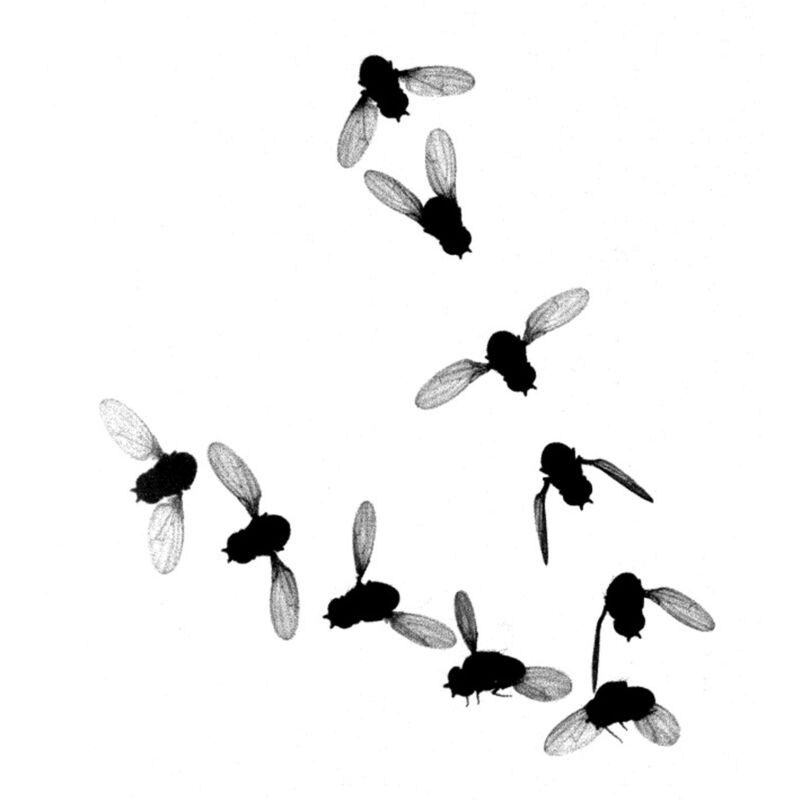U bent hier
Van dingen die voorbijkomen
Large Language Models (LLMs): Getting personal
A Guided Tour of the Largest Handmade Model of Imperial Rome: Discover the 20x20 Meter Model Created During the 1930s
At the moment, you can’t see the largest, most detailed handmade model of Imperial Rome for yourself. That’s because the Museo della Civiltà Romana, the institution that houses it, has been closed for renovations since 2014. But you can get a guided tour of “Il Plastico,” as this grand Rome-in-miniature is known, through the new Ancient Rome Live video above. “The archaeologist and architect Italo Gismondi created this amazing model,” explains host Darius Arya, previously featured here on Open Culture for his tour of Pompeii. Working at a 1:250 scale, Gismondi built most of Il Plastico between 1933 and 1937, with later expansions after its installation in the Museo della Civiltà Romana.
Archaeologists and other scholars have, of course, learned more about the Eternal City over the past nine decades, knowledge reflected in regularly updated digital models like Rome Reborn. But none have showed Gismondi’s dedication to painstaking manual labor, which allowed him to craft practically every then-known architectural and infrastructural feature within the walls of Rome in the Constantinian age, from 306 to 337 AD.
(adsbygoogle = window.adsbygoogle || []).push({}); . -->Arya points out recognizable landmarks like the Colosseum, the Forum, and the Pyramid of Cestius as well as bridges, river fortifications, aqueducts, and even landscaping details down to the level of individual trees.
Even when the camera zooms way in, Gismondi’s Rome looks practically habitable (and indeed, it may appeal to some viewers more than do the modern European cities that are its descendants). It’s no wonder that Ridley Scott, a director famously sensitive to visual impact, would use the model in Gladiator. And while a video tour like Arya’s provides a closer-up view of many sections of Il Plastico than one can get in person, the only way to fully appreciate the sheer scale of the achievement is to behold its physical reality. Luckily, you should be able to do just that next year, when the Museo della Civiltà Romana is scheduled to reopen at long last. But then, no more could Rome be built in a day than its museum could be renovated in a mere decade.
Related content:
A Huge Scale Model Showing Ancient Rome at Its Architectural Peak (Built Between 1933 and 1937)
Rome Reborn: A New 3D Virtual Model Lets You Fly Over the Great Monuments of Ancient Rome
Interactive Map Lets You Take a Literary Journey Through the Historic Monuments of Rome
Ancient Rome’s System of Roads Visualized in the Style of Modern Subway Maps
Based in Seoul, Colin Marshall writes and broadcasts on cities, language, and culture. His projects include the Substack newsletter Books on Cities, the book The Stateless City: a Walk through 21st-Century Los Angeles and the video series The City in Cinema. Follow him on Twitter at @colinmarshall or on Facebook.
Watch Iconic Artists at Work: Rare Videos of Picasso, Matisse, Kandinsky, Renoir, Monet, Pollock & More
Claude Monet, 1915:
We’ve all seen their works in fixed form, enshrined in museums and printed in books. But there’s something special about watching a great artist at work. Over the years, we’ve posted film clips of some of the greatest artists of the 20th century caught in the act of creation. Today we’ve gathered together eight of our all-time favorites.
Above is the only known film footage of the French Impressionist Claude Monet, made when he was 74 years old, painting alongside a lily pond in his garden at Giverny. The footage was shot in the summer of 1915 by the French actor and dramatist Sacha Guitry for his patriotic World War I‑era film, Ceux de Chez Nous, or “Those of Our Land.” For more information, see our previous post, “Rare Film: Claude Monet at Work in His Famous Garden at Giverny, 1915.”
Pierre-Auguste Renoir, 1915:
You may never look at a painting by the French Impressionist Pierre-Auguste Renoir in quite the same way after seeing the footage above, which is also from Sacha Guitry’s Ceux de Chez Nous. Renoir suffered from severe rheumatoid arthritis during the last decades of his life. By the time this film was made in June of 1915, the 74-year-old Renoir was physically deformed and in constant pain. The painter’s 14-year-old son Claude is shown placing the brush in his father’s permanently clenched hand. To learn more about the footage and about Renoir’s terrible struggle with arthritis, be sure to read our post, “Astonishing Film of Arthritic Impressionist Painter, Pierre-Auguste Renoir (1915).”
Auguste Rodin, 1915:
The footage above, again by Sacha Guitry, shows the French sculptor Auguste Rodin in several locations, including his studio at the dilapidated Hôtel Biron in Paris, which later became the Musée Rodin. The film was made in late 1915, when Rodin was 74 years old. For more on Rodin and the Hôtel Biron, please see: “Rare Film of Sculptor Auguste Rodin working at his Studio in Paris (1915).”
Wassily Kandinsky, 1926:
In 1926, filmmaker Hans Cürlis took the rare footage above of the Russian abstract painter Wassily Kandinsky applying paint to a blank canvas at the Galerie Neumann-Nierendorf in Berlin. Kandinsky was about 49 years old at the time, and teaching at the Bauhaus. To learn more about Kandinsky and to watch a video of actress Helen Mirren discussing his work at the Museum of Modern Art in New York, see our post, “The Inner Object: Seeing Kandinsky.”
Henri Matisse, 1946:
The French artist Henri Matisse is shown above when he was 76 years old, making a charcoal sketch of his grandson, Gerard, at his home and studio in Nice. The clip is from a 26-minute film made by François Campaux for the French Department of Cultural Relations. To read a translation of Matisse’s spoken words and to watch a clip of the artist working on one of his distinctive paper cut-outs, go to “Vintage Film: Watch Henri Matisse Sketch and Make His Famous Cut-Outs (1946).”
Pablo Picasso, 1950:
In the famous footage above, Spanish artist Pablo Picasso paints on glass at his studio in the village of Vallauris, on the French Riviera. It’s from the 1950 film Visite à Picasso (A Visit with Picasso) by Belgian filmmaker Paul Haesaerts. Picasso was about 68 years old at the time. You can find the full 19-minute film here.
Jackson Pollock, 1951:
In the short film above, called Jackson Pollock 51, the American abstract painter talks about his work and creates one of his distinctive drip paintings before our eyes. The film was made by Hans Namuth when Pollock was 39 years old. To learn about Pollock and his fateful collaboration with Namuth, see “Jackson Pollock: Lights, Camera, Paint! (1951).”
Alberto Giacometti, 1965:
The Swiss artist Alberto Giacometti is most famous for his thin, elongated sculptures of the human form. But in the clip above from the 1966 film Alberto Giacometti by the Swiss photographer Ernst Scheidegger, Giacometti is shown working in another medium as he paints the foundational lines of a portrait at his studio in Paris. The footage was apparently shot in 1965, when Giacometti was about 64 years old and had less than a year to live. To learn about Giacometti’s approach to drawing and to read a translation of the German narration in this clip, be sure to see our post, “Watch as Alberto Giacometti Paints and Pursues the Elusive ‘Apparition,’ (1965).”
Related Content:
1922 Photo: Claude Monet Stands on the Japanese Footbridge He Painted Through the Years
Creatief mixen van AI output kan je auteursrecht op het resultaat geven
Elisa Shupe werd aanvankelijk afgewezen toen ze probeerde auteursrecht te verkrijgen op een boek dat ze met hulp van ChatGPT had geschreven, las ik bij Wired. Toch is het haar gelukt, zij het niet met de argumentatie die ze liever had gehad. Het lijkt wel de jurisprudentie te bestendigen tot nu toe.
Het artikel legt uit: Het [logboek van Shupe] bevat een vergelijking naast elkaar van de onbewerkte machine-uitvoer en de definitieve versie van Shupe’s boek. Op zinsniveau paste ze vrijwel elke regel op de een of andere manier aan, van veranderingen in woordkeuze tot structuur. Een voorbeeld dat een personage in de roman beschrijft: ‘Mark keek naar haar, een complexe mix van bezorgdheid en ergernis duidelijk zichtbaar in zijn blik’ wordt ‘Mark bestudeerde haar, zijn blik weerspiegelde zowel zorgen als irritatie.’ Het US Copyright Office ziet dit als een vorm van ‘selectie, coördinatie en rangschikking van tekst gegenereerd door kunstmatige intelligentie’. Het idee van een creatieve selectie en bewerking van op zichzelf niet beschermd bronmateriaal is al lang aanvaard als een criterium voor auteursrecht. We kwamen dit in januari nog tegen: In Nederland bestaat deze constructie ook. Denk aan het creatief oppoetsen van een publiek-domeinwerk: dat geeft je ook auteursrecht op het opgepoetste resultaat (maar natuurlijk niet op het bronmateriaal). Ik zie geen reden waarom dit anders zou moeten werken als je een AI-werk ‘oppoetst’. Shupe had echter een ander argument ingebracht dat ze zelf sterker vond: [Namelijk] om een ??belangrijker pad te openen naar auteursrechterkenning voor door AI gegenereerd materiaal. “Ik probeer auteursrechten te verkrijgen op het door AI ondersteunde en door AI gegenereerde materiaal onder een ADA-vrijstelling vanwege mijn vele handicaps”, schreef ze in haar oorspronkelijke auteursrechtaanvraag. Ze is als 100 procent gehandicapt beoordeeld en heeft moeite met schrijven vanwege cognitieve stoornissen die verband houden met aandoeningen als een bipolaire stoornis, borderline-persoonlijkheidsstoornis en een misvorming van de hersenstam. Dan zie ik hoe het handig kan zijn als tools je een heel eind vooruit helpen.
Maar wat betekent het voor het auteursrecht op het resultaat? Stephen Hawking schreef bijvoorbeeld met een tool die losse woorden voorstelde, en iets dergelijks zit ook in veel telefoon-invoerapps: typ een woord en krijg een suggestie voor het volgende. Weinig mensen zullen zeggen dat de zin die je zo typt, een AI zin is. Het is mijn zin, het is gewoon logisch dat na ‘gewoon’ ‘logisch’ komt.
Als het systeem na één woord de hele zin afmaakt, of zelfs er een alinea van maakt, dan wordt dat gevoelsmatig een ander verhaal. Is dat nog een handige invulling van jouw keuze of zijn we dan al in de vrije ruimte van de tool beland?
De vergelijking die Shupe maakt, is ook een intrigerende: ze vergeleek “haar gebruik van OpenAI’s chatbot met een geamputeerde die een beenprothese gebruikt”. Oftewel: welk percentage van je lijf moet nog origineel-organisch zijn om nog ‘mens’ genoemd te worden? Daar is geen rechtszaak over gevoerd – en wat zou ook de insteek zijn, bij zo veel procent metaal bent u ruimbagage?
Arnoud
Het bericht Creatief mixen van AI output kan je auteursrecht op het resultaat geven verscheen eerst op Ius Mentis.
Woorden in de Kamer (2020-2023) (6)
Concern grows as bird flu spreads further in US cows: 32 herds in 8 states

Enlarge / Greylag geese sit on a field and rest while a cow passes by in the background. (credit: Getty | Daniel Bockwoldt)
Researchers around the world are growing more uneasy with the spread of highly pathogenic avian influenza (H5N1) in US dairy cows as the virus continues to make its way into new herds and states. Several experts say the US is not sharing enough information from the federal investigation into the unexpected and growing outbreak, including genetic information from isolated viruses.
To date, the US Department of Agriculture has tallied 32 affected herds in eight states: Idaho, Kansas, Michigan, New Mexico, North Carolina, Ohio, South Dakota, and Texas. In some cases, the movement of cattle between herds can explain the spread of the virus. But the USDA has not publicly clarified if all the herds are linked in a single outbreak chain or if there is evidence that the virus has spilled over to cows multiple times. Early infections in Texas were linked to dead wild birds (pigeons, blackbirds, and grackles) found on dairy farms. But the USDA reportedly indicated to Stat News that the infections do not appear to be all linked to the Texas cases.
Spread of the virus via cattle movements indicates that there is cow-to-cow transmission occurring, the USDA said. But it's unclear how the virus is spreading between cows. Given that even the most symptomatic cows show few respiratory symptoms, the USDA speculates that the most likely way it is spreading is via contaminated milking equipment.
Meta debuts Horizon OS, with Asus, Lenovo, and Microsoft on board

Enlarge / The Meta Quest Pro at a Best Buy demo station in October 2022.
Meta will open up the operating system that runs on its Quest mixed reality headsets to other technology companies, it announced today.
What was previously simply called Quest software will be called Horizon OS, and the goal will be to move beyond the general-use Quest devices to more purpose-specific devices, according to an Instagram video from Meta CEO Mark Zuckerberg.
There will be headsets focused purely on watching TV and movies on virtual screens, with the emphasis on high-end OLED displays. There will also be headsets that are designed to be as light as possible at the expense of performance for productivity and exercise uses. And there will be gaming-oriented ones.
Windows vulnerability reported by the NSA exploited to install Russian malware

Enlarge (credit: Getty Images)
Kremlin-backed hackers have been exploiting a critical Microsoft vulnerability for four years in attacks that targeted a vast array of organizations with a previously undocumented tool, the software maker disclosed Monday.
When Microsoft patched the vulnerability in October 2022—at least two years after it came under attack by the Russian hackers—the company made no mention that it was under active exploitation. As of publication, the company’s advisory still made no mention of the in-the-wild targeting. Windows users frequently prioritize the installation of patches based on whether a vulnerability is likely to be exploited in real-world attacks.
Exploiting CVE-2022-38028, as the vulnerability is tracked, allows attackers to gain system privileges, the highest available in Windows, when combined with a separate exploit. Exploiting the flaw, which carries a 7.8 severity rating out of a possible 10, requires low existing privileges and little complexity. It resides in the Windows print spooler, a printer-management component that has harbored previous critical zero-days. Microsoft said at the time that it learned of the vulnerability from the US National Security Agency.
High-speed imaging and AI help us understand how insect wings work

Enlarge / A time-lapse showing how an insect's wing adopts very specific positions during flight. (credit: Florian Muijres, Dickinson Lab)
About 350 million years ago, our planet witnessed the evolution of the first flying creatures. They are still around, and some of them continue to annoy us with their buzzing. While scientists have classified these creatures as pterygotes, the rest of the world simply calls them winged insects.
There are many aspects of insect biology, especially their flight, that remain a mystery for scientists. One is simply how they move their wings. The insect wing hinge is a specialized joint that connects an insect’s wings with its body. It’s composed of five interconnected plate-like structures called sclerites. When these plates are shifted by the underlying muscles, it makes the insect wings flap.
Until now, it has been tricky for scientists to understand the biomechanics that govern the motion of the sclerites even using advanced imaging technologies. “The sclerites within the wing hinge are so small and move so rapidly that their mechanical operation during flight has not been accurately captured despite efforts using stroboscopic photography, high-speed videography, and X-ray tomography,” Michael Dickinson, Zarem professor of biology and bioengineering at the California Institute of Technology (Caltech), told Ars Technica.
NASA officially greenlights $3.35 billion mission to Saturn’s moon Titan

Enlarge / Artist's illustration of Dragonfly soaring over the dunes of Titan. (credit: NASA/Johns Hopkins APL/Steve Gribben)
NASA has formally approved the robotic Dragonfly mission for full development, committing to a revolutionary project to explore Saturn's largest moon with a quadcopter drone.
Agency officials announced the outcome of Dragonfly's confirmation review last week. This review is a checkpoint in the lifetime of most NASA projects and marks the moment when the agency formally commits to the final design, construction, and launch of a space mission. The outcome of each mission's confirmation review typically establishes a budgetary and schedule commitment.
“Dragonfly is a spectacular science mission with broad community interest, and we are excited to take the next steps on this mission," said Nicky Fox, associate administrator of NASA's science mission directorate. "Exploring Titan will push the boundaries of what we can do with rotorcraft outside of Earth.”
Biden signs bill criticized as “major expansion of warrantless surveillance”

Enlarge (credit: Getty Images | Yuichiro Chino)
Congress passed and President Biden signed a reauthorization of Title VII of the Foreign Intelligence Surveillance Act (FISA), approving a bill that opponents say includes a "major expansion of warrantless surveillance" under Section 702 of FISA.
Over the weekend, the Reforming Intelligence and Securing America Act was approved by the Senate in a 60-34 vote. The yes votes included 30 Republicans, 28 Democrats, and two independents who caucus with Democrats. The bill, which was previously passed by the House and reauthorizes Section 702 of FISA for two years, was signed by President Biden on Saturday.
"Thousands and thousands of Americans could be forced into spying for the government by this new bill and with no warrant or direct court oversight whatsoever," Sen. Ron Wyden (D-Ore.), a member of the Senate Select Committee on Intelligence, said on Friday. "Forcing ordinary Americans and small businesses to conduct secret, warrantless spying is what authoritarian countries do, not democracies."
First real-life Pixel 9 Pro pictures leak, and it has 16GB of RAM
Enlarge / OnLeak's renders of the Pixel 9 Pro XL, the Pixel 9 Pro, and the Pixel 9. (credit: OnLeaks / 91Mobiles / MySmartPrice)
The usual timeline would put the Google Pixel 9 at something like five months away from launching, but that doesn't mean it's too early to leak! Real-life pictures of the "Pixel 9 Pro" model have landed over at Rozetked.
This prototype looks just like the renders from OnLeaks that first came out back in January. The biggest change is a new pill-shaped camera bump instead of the edge-to-edge design of old models. It looks rather stylish in real-life photos, with the rounded corners of the pill and camera glass matching the body shape. The matte back looks like it still uses the excellent "soft-touch glass" material from last year. The front and back of the phone are totally flat, with a metal band around the side. The top edge still has a signal window cut out of it, which is usually for mmWave. The Pixel 8 Pro's near-useless temperature sensor appears to still be on the back of this prototype. At least, the spot for the temperature sensor—the silver disk right below the LED camera flash—looks identical to the Pixel 8 Pro. As a prototype any of this could change before the final release, but this is what it looks like right now.
The phone was helpfully photographed next to an iPhone 14 Pro Max, and you might notice that the Pixel 9 Pro looks a little small! That's because this is one of the small models, with only a 6.1-inch display. Previously for Pixels, "Pro" meant "the big model," but this year Google is supposedly shipping three models, adding in a top-tier small phone. There's the usual big Pixel 9, with a 6.7-inch display, which will reportedly be called the "Pixel 9 Pro XL." The new model is the "Pixel 9 Pro"—no XL—which is a small model but still with all the "Pro" trimmings, like three rear cameras. There's also the Pixel 9 base model, which is the usual smaller phone (6.03-inch) with cut-down specs like only two rear cameras.
Home Assistant’s new foundation focused on “privacy, choice, and sustainability”

Enlarge (credit: Open Home Foundation)
Home Assistant, until recently, has been a wide-ranging and hard-to-define project.
The open smart home platform is an open source OS you can run anywhere that aims to connect all your devices together. But it's also bespoke Raspberry Pi hardware, in Yellow and Green. It's entirely free, but it also receives funding through a private cloud services company, Nabu Casa. It contains tiny board project ESPHome and other inter-connected bits. It has wide-ranging voice assistant ambitions, but it doesn't want to be Alexa or Google Assistant. Home Assistant is a lot.
After an announcement this weekend, however, Home Assistant's shape is a bit easier to draw out. All of the project's ambitions now fall under the Open Home Foundation, a non-profit organization that now contains Home Assistant and more than 240 related bits. Its mission statement is refreshing, and refreshingly honest about the state of modern open source projects.
Apple reportedly plans M4 Mac mini for late 2024 or early 2025, skipping the M3

Enlarge / The M2 Pro Mac mini. (credit: Andrew Cunningham)
Bloomberg's Mark Gurman thinks that Apple's M4 chips for Macs are coming sooner rather than later—possibly as early as "late this year," per a report from earlier this month. Now Gurman says Apple could completely skip the M3 generation for some Macs, most notably the Mac mini.
To be clear, Gurman doesn't have specific insider information confirming that Apple is planning to skip the M3 mini. But based on Apple's alleged late-2024-into-early-2025 timeline for the M4 mini, he believes that it's "probably safe to say" that there's not enough space on the calendar for an M3 mini to be released between now and then.
This wouldn't be the first time an Apple Silicon Mac had skipped a chip generation—the 24-inch iMac was never updated with the M2, instead jumping directly from the M1 to the M3. The Mac Pro also skipped the M1 series, leapfrogging from Intel chips to the M2.
After 48 years, Zilog is killing the classic standalone Z80 microprocessor chip

Enlarge / A cropped portion of a ca. 1980 ad for the Microsoft Z80 SoftCard, which allowed Apple II users to run the CP/M operating system. (credit: Microsoft)
Last week, chip manufacturer Zilog announced that after 48 years on the market, its line of standalone DIP (dual inline package) Z80 CPUs is coming to an end, ceasing sales on June 14, 2024. The 8-bit architecture debuted in 1976 and powered a small-business-PC revolution in conjunction with CP/M, also serving as the heart of the Nintendo Game Boy, Sinclair ZX Spectrum, the Radio Shack TRS-80, the Pac-Man arcade game, and the TI-83 graphing calculator.
In a letter to customers dated April 15, 2024, Zilog wrote, "Please be advised that our Wafer Foundry Manufacturer will be discontinuing support for the Z80 product and other product lines. Refer to the attached list of the Z84C00 Z80 products affected."
Designers typically use the Z84C00 chips because of familiarity with the Z80 architecture or to allow legacy system upgrades without needing significant system redesigns. And while many other embedded chip architectures have superseded these Z80 chips in speed, processing power, and capability, they remained go-to solutions for decades in products that didn't need any extra horsepower.
Why a GameCube/Wii emulator may not be possible on the iOS App Store

Enlarge / Don't expect to see this on the iOS App Store any time soon. (credit: OatmealDome)
Last week's release of the Delta emulation suite finally gave iOS users easy, no-sideloading-required access to classic Nintendo game emulation up through the Nintendo 64 era. When it comes to emulating Nintendo's subsequent home consoles on iOS, though, some technical restrictions imposed by Apple are making it difficult to get a functional emulator on the App Store.
In a recent blog post, DolphiniOS developer (and longtime Switch hacker) OatmealDome explains how a Dolphin code fork—which ports the popular GameCube and Wii emulator to Apple's smartphone OS—uses just-in-time (JIT) compilation to translate the PowerPC instructions from those retro consoles into ARM-compatible iOS code. But Apple's App Store regulations against apps that "install executable code" (Section 3.3.1B) generally prevent JIT recompilation on iOS, with very limited exceptions such as web browsers. That restriction may have some valid security reasoning behind it, but it can also get in the way for developers of tools like third-party browser engines (except recently in the EU).
While MacOS developers can make use of an explicit entitlement to allow JIT recompilation in an app, that exception doesn't apply to iOS developers. And while alternative App Stores and sideloaded apps (including DolphiniOS) have discovered various ways to enable JIT compilation on both jailbroken and stock iOS devices, these workarounds can get quite arcane and occasionally break with new iOS releases.
Tesla cuts Full Self Driving cost by 1/3 ahead of earnings call

Enlarge / Tesla's "Full Self Driving" system just got a third cheaper. (credit: Edie Leong for The Washington Post via Getty Images)
Tesla has dropped the price of its controversial "Full Self Driving" partially automated driver assist. Last week, getting access to FSD would cost you $12,000—today, it's a third cheaper at $8,000. Alternatively, customers can subscribe to the feature for $99 a month.
Tesla has bet heavily on FSD for the future of the company. It's one of two partially automated driving systems offered by Tesla—Autopilot is the older and less-capable system. FSD includes features such as auto lane changes, auto parking, the ability to summon the car from its parking space, and lane keeping (Autosteer in Tesla-speak) on surface streets.
Tesla claims that "[y]our car will be able to drive itself almost anywhere with minimal driver intervention and will continuously improve," but then also notes that "[t]he currently enabled features require active driver supervision and do not make the vehicle autonomous."
Refereeing frequency, redux
The official Deadpool and Wolverine is finally here, and yes, it’s awesome
Ryan Reynolds and Hugh Jackman join forces in Deadpool and Wolverine.
We were already looking forward to the summer release of Deadpool and Wolverine, which will bring together Ryan Reynolds' R-rated antihero with Hugh Jackman's iconic X-Man. We're even more eager to see the film after Marvel dropped the official trailer, which is chock-full of off-color witticisms, meta-references, slo-mo action, and a generous sprinkling of F-bombs. (But no cocaine! Wade promised Feige! "They know all the slang terms. They have a list.")
"You’re talking about two massive movie stars in their most iconic roles,” Director Shawn Levy (Free Guy) told Screen Rant earlier this month. “It also gave me an opportunity. It’s the third Deadpool movie, but it’s not Deadpool 3. It’s a different thing that’s very much Deadpool and Wolverine. And it’s not trying to copycat anything from the first two movies. They were awesome, but this is a two-hander character adventure.”
(Spoilers for Deadpool 2 below.)
TikTok ready to “move to the courts” to prevent ban in US

Enlarge (credit: Sheldon Coope | SOPA Images | LightRocket | Getty Images)
TikTok is gearing up for a long legal battle to fight legislation in the US that threatens to ban the app in its largest market if its Chinese owner, ByteDance, refuses to sell the viral video platform.
The US House of Representatives on Saturday passed a package of national security bills that included legislation that would result in TikTok being banned in the country if Chinese parent company ByteDance does not divest the app.
Michael Beckerman, TikTok’s public policy head in the US, told staff in response that if the bill became law, the company would “move to the courts for a legal challenge.”
















































































































![Reference manager - [Onderhoud aantekeningen]](http://www.labyrinth.rienkjonker.nl/sites/default/files/styles/medium/public/Reference%20manager%20v3%20-%20%5BOnderhoud%20aantekeningen%5D%2014-2-2010%20102617_0.jpg?itok=OJkkWhxY)
![Reference manager - [Onderhoud aantekeningen]](http://www.labyrinth.rienkjonker.nl/sites/default/files/styles/medium/public/Reference%20manager%20v3%20-%20%5BOnderhoud%20aantekeningen%5D%2014-2-2010%20102628.jpg?itok=CUvhRRr7)
![Reference manager - [Onderhoud bronnen] - Opnemen en onderhouden](http://www.labyrinth.rienkjonker.nl/sites/default/files/styles/medium/public/Reference%20manager%20v3%20-%20%5BOnderhoud%20bronnen%5D%2014-2-2010%20102418.jpg?itok=d7rnOhhK)
![Reference manager - [Onderhoud bronnen]](http://www.labyrinth.rienkjonker.nl/sites/default/files/styles/medium/public/Reference%20manager%20v3%20-%20%5BOnderhoud%20bronnen%5D%2014-2-2010%20102433.jpg?itok=CgS8R6cS)
![Reference manager - [Onderhoud bronnen]](http://www.labyrinth.rienkjonker.nl/sites/default/files/styles/medium/public/Reference%20manager%20v3%20-%20%5BOnderhoud%20bronnen%5D%2014-2-2010%20102445_0.jpg?itok=4oJ07yFZ)
![Reference manager - [Onderhoud bronnen]](http://www.labyrinth.rienkjonker.nl/sites/default/files/styles/medium/public/Reference%20manager%20v3%20-%20%5BOnderhoud%20bronnen%5D%2014-2-2010%20102500.jpg?itok=ExHJRjAO)
![Reference manager - [Onderhoud bronnen]](http://www.labyrinth.rienkjonker.nl/sites/default/files/styles/medium/public/Reference%20manager%20v3%20-%20%5BOnderhoud%20bronnen%5D%2014-2-2010%20102524.jpg?itok=IeHaYl_M)
![Reference manager - [Onderhoud bronnen]](http://www.labyrinth.rienkjonker.nl/sites/default/files/styles/medium/public/Reference%20manager%20v3%20-%20%5BOnderhoud%20bronnen%5D%2014-2-2010%20102534.jpg?itok=cdKP4u3I)
![Reference manager - [Onderhoud thema's en rubrieken]](http://www.labyrinth.rienkjonker.nl/sites/default/files/styles/medium/public/Reference%20manager%20v3%20-%20%5BOnderhoud%20themas%20en%20rubrieken%5D%2020-9-2009%20185626.jpg?itok=zM5uJ2Sf)













![Reference manager - [Raadplegen aantekeningen]](http://www.labyrinth.rienkjonker.nl/sites/default/files/styles/medium/public/Reference%20manager%20v3%20-%20%5BRaadplegen%20aantekeningen%5D%2020-9-2009%20185612.jpg?itok=RnX2qguF)
![Reference manager - [Relatie termen (thesaurus)]](http://www.labyrinth.rienkjonker.nl/sites/default/files/styles/medium/public/Reference%20manager%20v3%20-%20%5BRelatie%20termen%20%28thesaurus%29%5D%2014-2-2010%20102751.jpg?itok=SmxubGMD)
![Reference manager - [Thesaurus raadplegen]](http://www.labyrinth.rienkjonker.nl/sites/default/files/styles/medium/public/Reference%20manager%20v3%20-%20%5BThesaurus%20raadplegen%5D%2014-2-2010%20102732.jpg?itok=FWvNcckL)
![Reference manager - [Zoek thema en rubrieken]](http://www.labyrinth.rienkjonker.nl/sites/default/files/styles/medium/public/Reference%20manager%20v3%20-%20%5BZoek%20thema%20en%20rubrieken%5D%2020-9-2009%20185546.jpg?itok=6sUOZbvL)
![Reference manager - [Onderhoud rubrieken]](http://www.labyrinth.rienkjonker.nl/sites/default/files/styles/medium/public/Reference%20manager%20v3%2020-9-2009%20185634.jpg?itok=oZ8RFfVI)

![Reference manager - [Onderhoud aantekeningen]](http://www.labyrinth.rienkjonker.nl/sites/default/files/styles/medium/public/Reference%20manager%20v3%20-%20%5BOnderhoud%20aantekeningen%5D%2014-2-2010%20102603.jpg?itok=XMMJmuWz)


































































